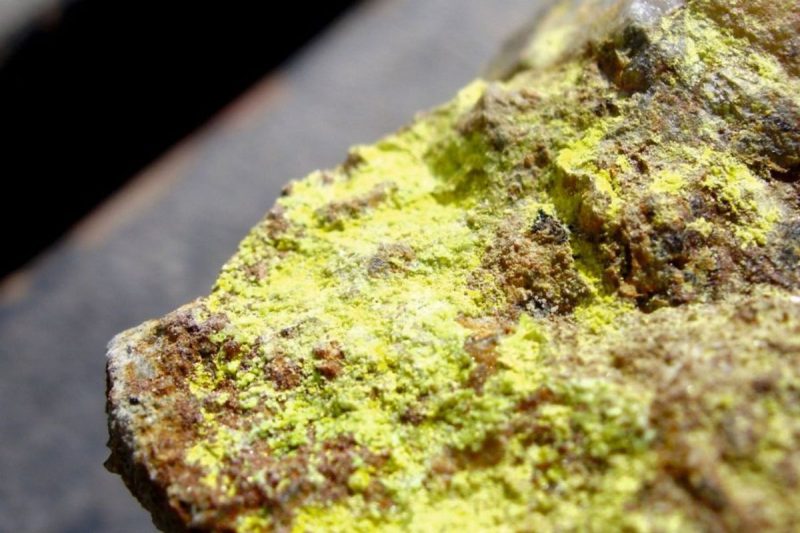
5 Top Weekly TSX Stocks: Laramide Rises on Uranium Assay Results from Westmoreland
The S&P/TSX Composite Index (INDEXTSI:OSPTX) fell 0.97 percent last week, finishing at 19,546.5.
The index was at lows not seen in three months as the gold price faced pressure, slipping from about US$1,920 per ounce at the start of the period to just below US$1,850 by the time it wrapped up. Gold’s movement can impact Canada’s largest index, and the yellow metal is currently being hurt by strong bond yields as well as a rally in the US dollar.
Against that backdrop, some resource juniors listed on the TSX saw their share prices go up last week. Here’s a look at the five biggest gainers and the factors that moved their share prices during the period.
1. Valeura Energy (TSX:VLE)
Weekly gain: 23.3 percent; market cap: C$349.85 million; current share price: C$3.44
With a focus on Thailand and Turkey, Valeura Energy is pursuing the exploration, development and production of petroleum and natural gas assets. Its strategy is to grow through M&A activity in Southeast Asia.
There was no fresh news from the company last week, but during the previous five day period it announced results from two appraisal wells drilled at the Thailand-based Wassana oil field.
2. Athabasca Oil (TSX:ATH)
Weekly gain: 13.58 percent; market cap: C$2.55 billion; current share price: C$4.35
Athabasca Oil describes itself as a liquids-weighted intermediate producer that is focused on the Western Canadian Sedimentary Basin in Alberta. Its thermal oil division includes two operating oil sands steam-assisted gravity drainage projects, and its light oil division produces light oil and liquids-rich natural gas from unconventional reservoirs.
The company’s latest news came on September 14, when it closed a sale of non‐core light oil assets to a private company. Athabasca Oil’s share price rose 13.58 percent last week to close at C$4.35.
3. Laramide Resources (TSX:LAM)
Weekly gain: 11.86 percent; market cap: C$149.67 million; current share price: C$0.66
Laramide Resources operates in Australia and the US. In Queensland it has Westmoreland, which it says is one of the largest uranium development assets held by a junior, and in the Northern Territory it has the Murphy project. The company’s US assets include the Crownpoint-Churchrock and La Jara Mesa uranium projects in New Mexico, plus the La Sal uranium project in Utah.
Last Friday (September 29), Laramide shared assay results from the first two diamond drill holes completed at Westmoreland’s Amphitheatre exploration target. According to the company, it intercepted broad-based uranium mineralization in the holes. The news sent its share price up 11.86 percent to finish at C$0.66.
4. Western Resources (TSX:WRX)
Weekly gain: 11.76 percent; market cap: C$77.61 million; current share price: C$0.19
Western Resources’ key asset is the Saskatchewan-based Milestone potash project, which entered the construction phase in mid-2019 and is expect to start production in early 2024. Phase 1 has a production capacity of 146,000 metric tons of potash per year and will use selective solution mining techniques and crystallization ponds.
Last Thursday (September 28), Western Resources announced that its subsidiary Western Potash received C$5 million from Vantage Chance as part of an exchangeable debenture subscription agreement. The company’s share price rose 11.76 percent during the five day period to close at C$0.19.
5. Baytex Energy (TSX:BTE)
Weekly gain: 10.11 percent; market cap: C$5.17 billion; current share price: C$5.99
Baytex Energy’s goal is to become a top-tier North American oil producer, and to that end the company has honed its efforts on the Western Canadian Sedimentary Basin and the Eagle Ford in the US. It currently has three main operating areas: heavy oil in Canada, light oil in Canada and light oil in the US.
Baytex didn’t release any news last week, but its share price jumped 10.11 percent to close at C$5.99.
FAQs for TSX stocks
How big is the TSX?
The TSX is Canada’s biggest stock exchange, and as of September 8, 2023, it had 1,789 listed stocks for a total market value of more than C$3.79 trillion. The TSX is often ranked as one of the 10 largest stock exchanges in the world.
Why do companies list on the TSX?
Listing on one of the world’s largest stock exchanges provides companies with greater market exposure, the ability to raise capital and an opportunity to build a strong financial reputation. In its technical guide to listing, the TSX states the exchange “offers companies a dynamic market to raise capital, enhanced liquidity, specialized indices, visibility and analyst coverage.’
What sectors are included in the S&P/TSX Composite Index?
The S&P/TSX Composite Index tracks more than 230 constituents across a wide range of sectors, of which the top five by weight are: financials (30 percent), energy (18 percent), industrials (13.5 percent), materials (11.9 percent) and information technology (8 percent).
What was the highest point for the TSX?
The TSX hit a record high of 22,213.07 points in April 2022. While the exchange was at 20,074.65 points as of September 8, 2023, there are high expectations that the TSX could move past the 22,000 level by the end of 2023 to set new record highs.
Data for 5 Top Weekly TSX Performers articles is retrieved each Friday after market close using TradingView’s stock screener. Only companies with market capitalizations greater than C$50 million prior to the week’s gains are included. Companies within the non-energy minerals and energy minerals are considered.
Article by Charlotte McLeod; FAQs by Melissa Pistilli.
Securities Disclosure: I, Charlotte McLeod, hold no direct investment interest in any company mentioned in this article.
Securities Disclosure: I, Melissa Pistilli, hold no direct investment interest in any company mentioned in this article.
